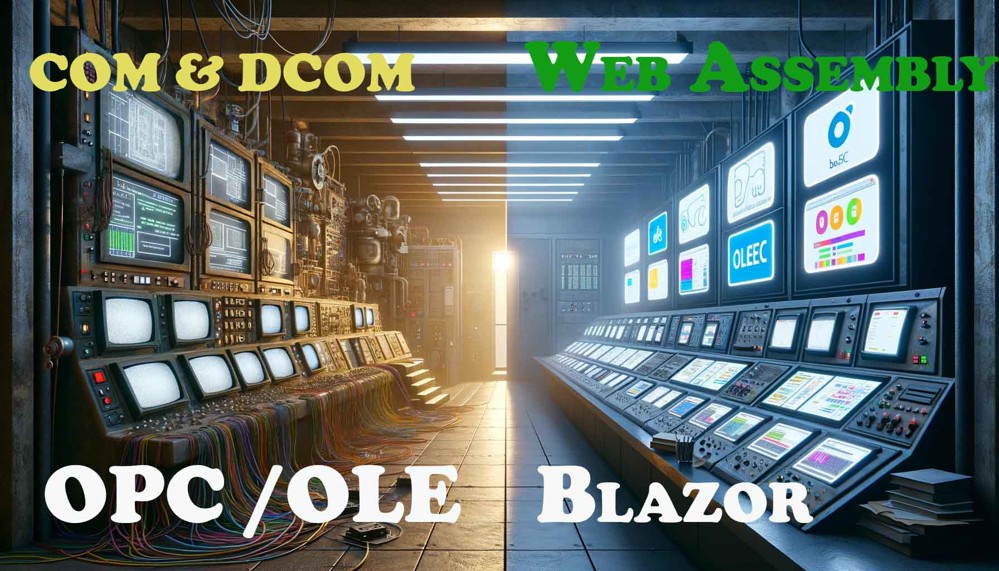The New Frontier of Industrial Process Control: The Rise of .NET 8 Blazor Apps and WebAssembly

In the ever-evolving landscape of industrial process control, the search for efficient, reliable, and scalable software solutions remains a paramount concern for engineers and developers alike. Enter the world of .NET 8 Blazor apps and WebAssembly, technologies that stand at the forefront of revolutionizing how mission-critical process control systems are designed, deployed, and maintained. This comprehensive exploration delves into the benefits and demerits of these technologies, offering a nuanced perspective on their potential to redefine industrial process control.
The Advent of .NET 8 and Blazor in Industrial Settings
.NET 8 marks the latest iteration of Microsoft's venerable development framework, bringing with it significant enhancements in performance, security, and cross-platform capabilities. Blazor, a framework within the .NET ecosystem, allows developers to build interactive web applications using C# instead of JavaScript. This shift is not merely technical but philosophical, bridging the gap between traditional software engineering and web development to create a unified development experience.
Unleashing Potential with Blazor and WebAssembly
Blazor apps can run in the browser via WebAssembly, enabling full .NET runtime capabilities without the need for plugins or code transpilation. This is particularly beneficial for industrial process control for several reasons:
- Performance: WebAssembly facilitates near-native performance, crucial for real-time process monitoring and control applications where latency can be a deal-breaker.
- Security: Given the sensitive nature of process control systems, the enhanced security model of .NET, coupled with the sandboxed execution environment of WebAssembly, provides a robust defense against cyber threats.
- Cross-platform Compatibility: The ability to run on any modern browser regardless of the underlying operating system aligns perfectly with the heterogeneous environments typical in industrial settings.
The Benefits of Blazor and WebAssembly for Industrial Process Control
The adoption of Blazor and WebAssembly in industrial process control systems offers several compelling advantages:
Enhanced Development Efficiency
Developers can leverage their C# expertise to craft front-end and back-end systems, significantly reducing the cognitive load and streamlining the development process. This unified approach ensures that teams can focus on delivering value rather than wrestling with the intricacies of multiple programming languages and frameworks.
Improved Maintenance and Upgradability
The modular nature of .NET applications, coupled with the standardized web technologies underlying WebAssembly, simplifies the maintenance and upgrading of industrial process control systems. This is critical for ensuring that these systems can evolve in response to new challenges and opportunities without necessitating complete overhauls.
Seamless Integration with Existing Systems
Blazor and WebAssembly can integrate smoothly with existing .NET-based infrastructure, a common scenario in many industrial environments. This compatibility facilitates the gradual adoption of new technologies without disrupting ongoing operations.
Navigating the Challenges
Despite the promising advantages, the implementation of Blazor and WebAssembly in industrial process control is not without challenges:
Resource Constraints
WebAssembly applications, while efficient, may still face performance limitations on highly constrained devices commonly found in industrial settings. Optimizing for these environments requires careful consideration and, in some cases, may necessitate fallbacks to more traditional solutions.
Maturity and Ecosystem Support
As relatively new entrants to the field, Blazor and WebAssembly are still maturing. The ecosystem, including third-party libraries and tools, is burgeoning but may not yet offer the same breadth and depth as more established technologies.
Learning Curve
For teams not already familiar with .NET and C#, there is an inherent learning curve associated with adopting Blazor and WebAssembly. While this is a one-time investment, it can be a significant factor in decision-making processes.
Looking Ahead: The Future of Industrial Process Control
The integration of .NET 8 Blazor apps and WebAssembly into industrial process control systems is more than a technological evolution; it represents a paradigm shift towards more unified, efficient, and secure software development practices. The benefits—ranging from improved performance and security to enhanced development efficiency—underscore the potential of these technologies to address the complex demands of modern industrial environments.
However, the journey towards widespread adoption will require navigating the challenges of resource constraints, ecosystem maturity, and the learning curve associated with new technologies. As the ecosystem evolves and matures, it is anticipated that Blazor and WebAssembly will play an increasingly central role in the development of mission-critical process control systems.
In conclusion, .NET 8 Blazor apps and WebAssembly offer a compelling proposition for redefining industrial process control. By embracing these technologies, the industry can leverage the full spectrum of benefits while thoughtfully addressing the associated challenges. The path forward is one of innovation, collaboration, and continuous learning, with the promise of significantly enhancing the reliability, efficiency, and scalability of industrial process control systems.



